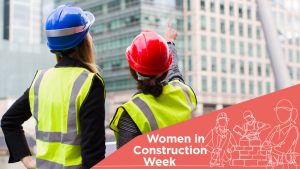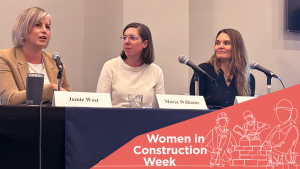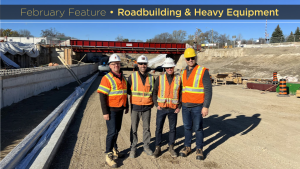Is your environment ready to embrace a diverse workforce? Are you aware of the biases that might be within your company, within the culture that your company is all about? Are you willing to confront those biases?
Those are the three questions companies need to be asking themselves when addressing gender, racial and cultural diversity and inclusion, said Bronwyn Weaver of Ohio-based Q4 Impact Group who hosted the second and third part of an Ontario Road Builders’ Association webinars entitled Welcoming Diversity and Inclusion in our Workforce.
During the webinar, Weaver interviewed Katie Kosloski, assistant plant manager, aggregates with Luck Companies in Altanta, GA about her experience in the industry and some of the challenges she has faced.
“One of the biggest things that helped me is not being afraid to talk about it,” said Kosloski. “As you have more female candidates coming in the door, having their direct reports or the people that they’re working with not being afraid to say, ‘hey, should we be treating you any differently, you know, we don’t want you to feel left out,’ I don’t think it’s a bad thing. Talk about it and just make sure that you are on the same page.”
If employers want to foster an environment where women feel like they belong having dedicated facilities is key, she added.
“The first quarry I worked at, we did not have a female restroom and I didn’t have a locker room to change in so I would have to wait until all the guys left to change out of my work clothes,” she recalled. “Just make sure that if you want to be an inclusive environment, that you are creating a facility that is inclusive.”
Students that are looking at engineering and mining as an option often hesitate because they are concerned they will not have work-life balance, she noted.
“The big fear is that operations is not necessarily friendly to a work-life balance or to being a mother or being a wife,” she said.
“You have shiftwork, and you have these long hours. If our industry can do something to be more accommodating to work-life balance, I believe we’ll have a better chance at soliciting women and getting them involved in all the fun stuff in the awesome career that mining can offer.”
Racial and cultural diversity and inclusion
While it’s important to be inclusive of people from outside Canada, recognizing people in Canada is also important.
In particular, Weaver talked about her experience working with Inuit and Metis communities in Canada in 2018 and 2019.
“They are an incredible resource for our workforce and in many ways, we have to be open to rethinking how we reach out to those communities and make them feel welcome in our construction materials community,” said Weaver.
“I had the opportunity to meet Chief Louie, who is been recognized throughout Canada for his leadership.
“He believes that the First Nations communities need to manage themselves so that they can be independent and self-reliant and sustainable into the future.”
She worked with him on a project to get the permitting in place for a mine.
“His approach with bridging the communications gap was, I thought, really wonderful and very practical. I really valued the time that I was able to spend learning from him about his approach,” said Weaver.
The project also required leadership from three communities, two Metis communities and a First Nations community.
“For the first time, we brought together these three communities to really talk about what the issues were, what the important aspects were, what their own agendas were,” explained Weaver.
Leaders need to lead
Some of the problems that have led to companies having a non-diverse workforce are employee referrals, appealing to diverse talent without diverse staff, unconscious biases and micro aggressions, and internal isolation. Adaptive leadership needs to be at the core of transforming companies to be diverse and inclusive, she added.
“Organizational culture doesn’t just happen,” Weaver said. “It takes intention, it takes planning, it takes resources and it takes dedicated leadership. That leadership better be linked arm in arm about what they are trying to accomplish, I mean standing so close together in alignment that you can’t see any daylight between any of your leaders. If you don’t have that kind of alignment with this sort of a cause, then that’s something to address first.”
Bringing people with different perspectives into the decision-making process is going to lead to better decisions, she added.
“There’s going to be conflict. There is going to be confrontation. It’s going to be challenging,” Weaver pointed out. “But, from that experience, we will, as organizations, make better decisions and make decisions that are better suited to the long-term sustainability of our companies.”
Follow the author on Twitter @DCN_Angela.











Recent Comments
comments for this post are closed